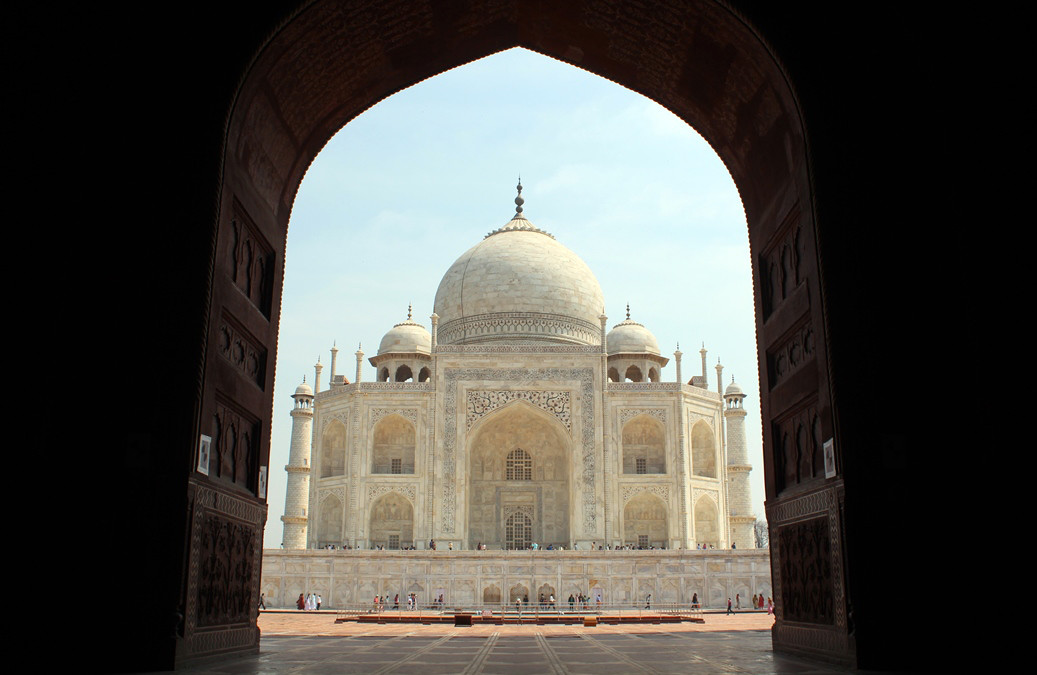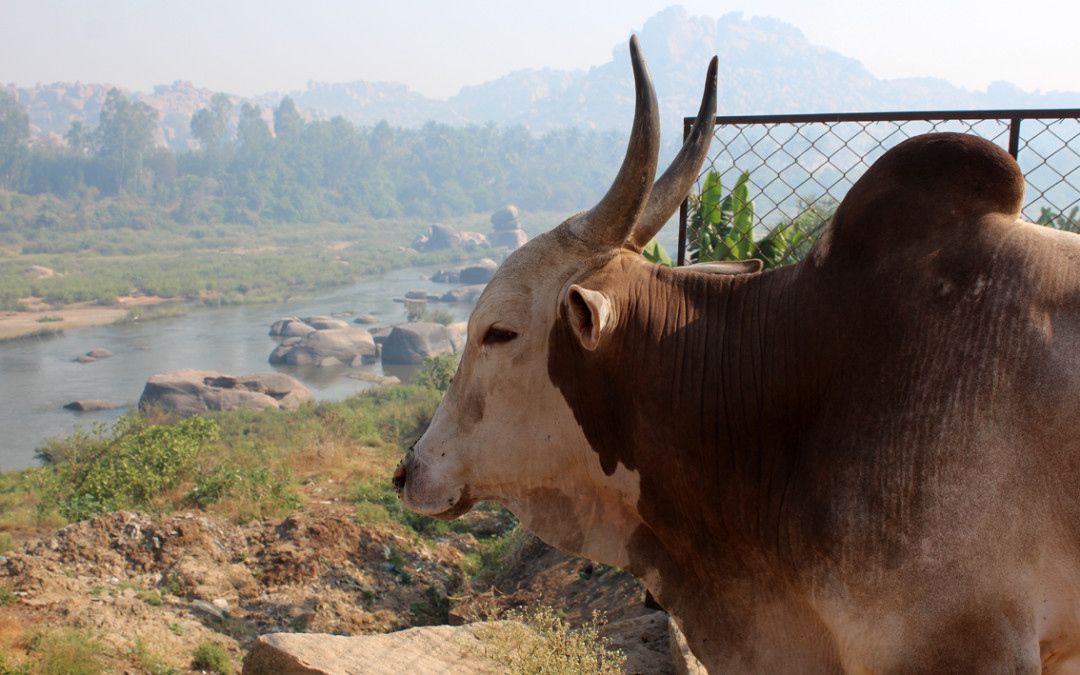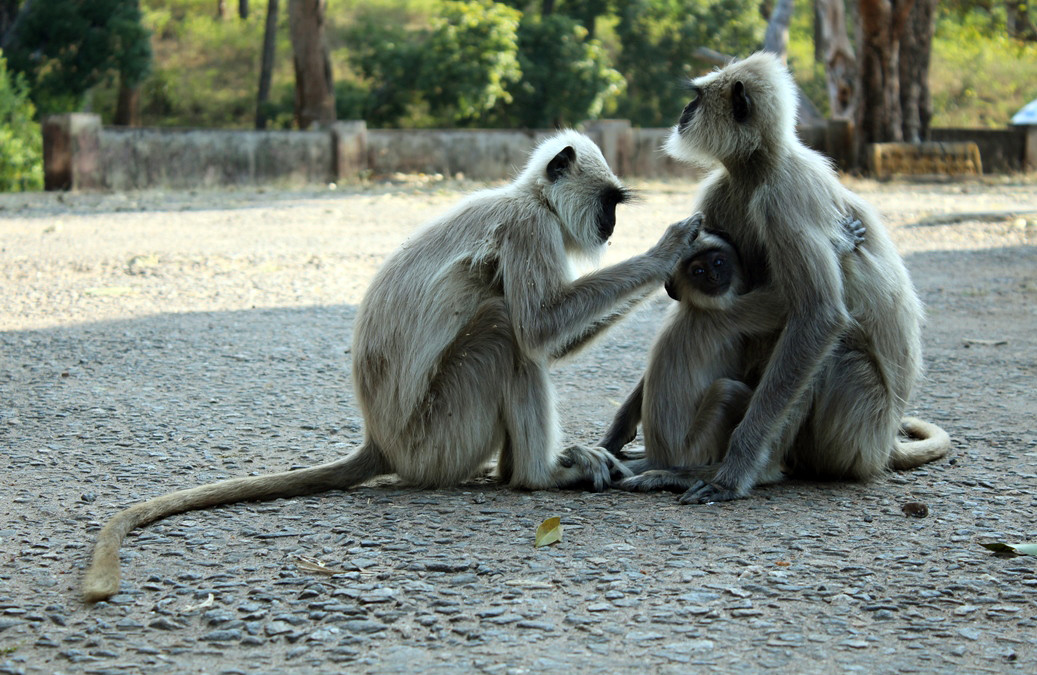
by Sezgin | Apr 21, 2015 | SeedsonWheels |
Next to slowly flowing river Ganges, inhabited for over 3000 years; the holy city Varanasi. The city of Shiva, god of destruction, those who died here and ashes of the bodies of whom mix with the river is believed to be freed from the circle of life, whose souls are liberated. The city, bringing Hindus from all around India, coming here for pilgrimage or to join the cremation ceremony of their relatives, and travellers from all around the world together; is a labyrinth consisted of narrow streets in which it is hardly possible for a cow and a human to walk side by side. Hundreds of temples in this labyrinth; some of them are magnificent structures; some of them are just a small hole on a wall near the road. Abundance of temples makes praying daily life itself. Hundreds of old people settle here and wait for the death, as it is believed if someone’s cremation takes place in this city he/she is freed from the circle of life with total absolution. People make long queues in the streets to take vow in temples. Manikarnika Ghat, one of the tens of “ghats” next to the river, is used only for cremation, while people are gathering in Dashashwamedh Ghat ever night at 7 for “Puja” ceremony. In some of the ghats there is music in the evening; it is possible to run into a great Indian Classical Music concert if you are lucky. We feel something different in Varanasi since the first day we arrived. We breathe the ashes flitting around while watching the cremation. There is not a smile...

by Sezgin | Mar 27, 2015 | SeedsonWheels |
We leave Hampi and reach Mumbai in morning hours after 18 hours of journey. We didn’t plan to go to Mumbai as we wanted to keep away from the chaos of big cities, but we had to transfer there on the way to Rajasthan. We had the chance to wander in Mumbai for 14 hours, waiting for the next train. After leaving our backpacks to the train station and just seeing the mighty buildings from the times of British colonization era and visiting the city center where “Gateway of India” stands, we went back to the train station for our 16 hours trip to Jodhpur. Now, we are in the northeast India, in Rajasthan state. Rajasthan means “The Land of Great Kingdoms”. When we go up to the terrace of the guesthouse we found after searching in narrow streets of Jodhpur, we face with Mehrangarh Fort, which looks more magnificent than in the movie, The Fall. While walking among multilayered buildings and seeing just a small part of the sky, we are trying to run away from motorcycles, make way for cows and avoid stepping into the shit. We can’t take our eyes from the surrounding world in streets that can get too narrow sometimes and turning into stairs. Sardar Market, at the touristic center of Jodhpur, captures us with peddlers around the clock tower, shops that can you can find almost everything available and its always open market. Its atmosphere is very friendly and even “familiar”. We climb up to the castle by walking. It’s for free to enter the fort; it is paid just for the museum....

by Sezgin | Feb 27, 2015 | SeedsonWheels |
In our long trip from the south of India to the north, we left Karnataka at the end of February, where we came at the end of January. Gokarna, where we arrived after 16 hours of train journey starting from Mysore, is a settlement in Karnataka State of India, south of Goa. It is a place we just stopped by on the advices of travellers we met on the road. Keeping its small town view, Gokarna is a coastal settlement, in which, density of population is mostly consisted of tourists. We stay for 12 days in Kudle Beach unexpectedly, where you can reach by renting a tuk-tuk for 100 Rs (1,5 $) just from the bus stop or for free by walking for 20 minutes. We walk down the hill, after getting off from the tuk-tuk that left us on a steep and arid hill. The road leads to the beach passing over the stair shaped rocks. The hot beach lies before us, on which to walk at noon, one should be either as fast as Roadrunner or as patient as a Buddhist monk. It is 29th of January and we are looking for a shadow where there is no danger of falling coconuts. Along the coast, there are guesthouses after the long beach. Except several expensive places, most of the rooms are huts, walls of which are built by using coconut leafs with sand floor. But anyway, it is not easy to find a room in high season. We start looking for a place to camp, rather than paying 350-400 Rupees (7-10 $) for a room that doesn’t...

by Sezgin | Feb 8, 2015 | SeedsonWheels |
We are in the first wildlife reserve are we have visited in Asia part of our trip. Its name is Mudumalai Tiger Reserve. The reserve area, on the way between Ooty and Mysore, with a busy road passing through it, is not fenced and a natural living area of wild elephants, gazelles, monkeys, tigers and some tribes under protection, living in a primitive way compared to actual circumstances. It is open for tourism with a reception, information center and several guesthouses in a small area. It is prohibited to walk out of the space around these buildings. Also with your own vehicle… This restriction is to avoid being hunted by wild animals and getting lost in the forest. It is also forbidden to get close to the local people around the place because nobody wants to spoil their way of living by modern citizens, especially by western tourists. So, the “wild” people are also under protection here. Just for a couple times in a day, the chance to observe wild life is given to us, modern human, with camouflage-buses following a certain way in “Wild Life Tour”. We join one of them because of despair and inattention. As wild animals are afraid of the noisy buses, not only we it is not possible to observe wild life, but also it becomes an activity in which we feel ashamed because of disturbance we caused and questioned our species again. This place is so quiet and calm that, we dream of staying for one night and observe the wild life around. After settling in a room we found luckily in one...

by Sezgin | Jan 25, 2015 | SeedsonWheels |
Coming back to India after Sri Lanka, first we stepped into the capital of Kerala, Thiruvananthapuram (or Trivandrum), and our first thought was like: “Hello again the smell of urine, hello crazy sound of horns”… But interestingly, we felt ourselves back home again. Kerala, is the western of two states sharing the south part of India (The other one is Tamil Nadu. E.g. Chennai, Ponducherry and Madurai). This time the local language is Malayam, English speaking level is very high. According to Lonely Planet, this is the place with highest level of literacy in India (approx. 100%). We indicated that there is a different culture in every state of India. When we first written about that, we hadn’t experience yet, we just heard of it. We understand what it means when we arrive Kerala. First, we are going to Kovalam, 40 minutes south of Trivandrum. We weren’t planning to go there actually but, our hosts were living there who accepted our Couchsurfing request. Grigory and Ulyana is a Russian couple who is living in India for some time and working as tourist guides. They work very hard but we come together at dinner. Grigory is an adventurer who travelled to many places on the earth. He even experienced passing over a river in Tibet illegally with his bike on his shoulders. They also give us a short photography course as they are both professional photographers. Kovalam, one of the famous beaches of Kerala, is a center of Ayurvedic treatment and Yoga Schools. It’s highly touristic, more expensive compared to the average of India, but a calm holiday resort. Average...







